The average distance for each golf club varies based on the club type and the player’s skill level. Drivers typically reach 230-290 yards, while wedges cover 90-120 yards.
Understanding the average distance for each golf club is crucial for improving your game. It helps golfers select the right club for each shot, enhancing accuracy and performance. Distances vary due to factors such as the club’s loft, the golfer’s swing speed, and environmental conditions.
Knowing these distances can aid in better decision-making on the course. Whether you are a beginner or an experienced golfer, mastering club distances is key to lowering your scores and enjoying the game more. This knowledge empowers you to strategize effectively, leading to improved overall play.
Introduction To Club Distances

Understanding the average distance for each golf club is crucial for golfers. This knowledge helps in making informed decisions on the course. Whether you are a beginner or an experienced player, knowing your club distances can greatly improve your game. This section will provide a comprehensive overview of club distances.
Importance Of Knowing Distances
Knowing the average distance for each golf club can be a game-changer. It helps in selecting the right club for each shot. This reduces the chances of under or over-hitting the ball. Here’s why it matters:
- Improved Accuracy: You can hit more accurate shots.
- Better Course Management: Plan your shots effectively.
- Confidence Boost: Play with more confidence.
How Data Improves Your Game
Data on club distances can significantly enhance your gameplay. Using technology like golf simulators and GPS devices, you can track and analyze your shots. Here’s how data helps:
- Identifying Weaknesses: Find areas needing improvement.
- Customizing Strategy: Tailor your approach based on data.
- Tracking Progress: Monitor your improvement over time.
To give you a better idea, here is a table showing the average distances for different golf clubs:
| Golf Club | Average Distance (Yards) |
|---|---|
| Driver | 230-290 |
| 3-Wood | 210-240 |
| 5-Wood | 200-230 |
| 4-Iron | 170-200 |
| 5-Iron | 160-190 |
| 6-Iron | 150-180 |
| 7-Iron | 140-170 |
| 8-Iron | 130-160 |
| 9-Iron | 120-150 |
| PW | 110-140 |
By understanding and leveraging this data, you can make smarter choices on the course. This leads to better performance and more enjoyable rounds of golf.
Driver Distances
Understanding driver distances is crucial for improving your golf game. Many golfers wonder how far they should hit their driver. The answer depends on various factors. In this section, we will explore the average yardage and what affects driver distance.
Average Yardage
On average, amateur male golfers hit their driver around 220 yards. Female golfers average about 170 yards. These numbers can vary based on skill level and swing speed. Here is a breakdown:
| Skill Level | Male Average Distance (yards) | Female Average Distance (yards) |
|---|---|---|
| Beginner | 190 | 140 |
| Intermediate | 220 | 170 |
| Advanced | 250 | 200 |
Factors Affecting Driver Distance
Several factors can affect how far you hit your driver:
- Swing Speed: Faster swings generally result in longer drives.
- Club Head Speed: The speed of the club head at impact greatly impacts distance.
- Ball Contact: Hitting the ball in the sweet spot maximizes distance.
- Weather Conditions: Wind and temperature can affect the ball’s flight.
- Physical Fitness: Stronger, more flexible golfers usually hit farther.
Improving these factors can help you achieve greater distances. Practicing regularly and focusing on technique is key.
Table of Contents
Fairway Woods
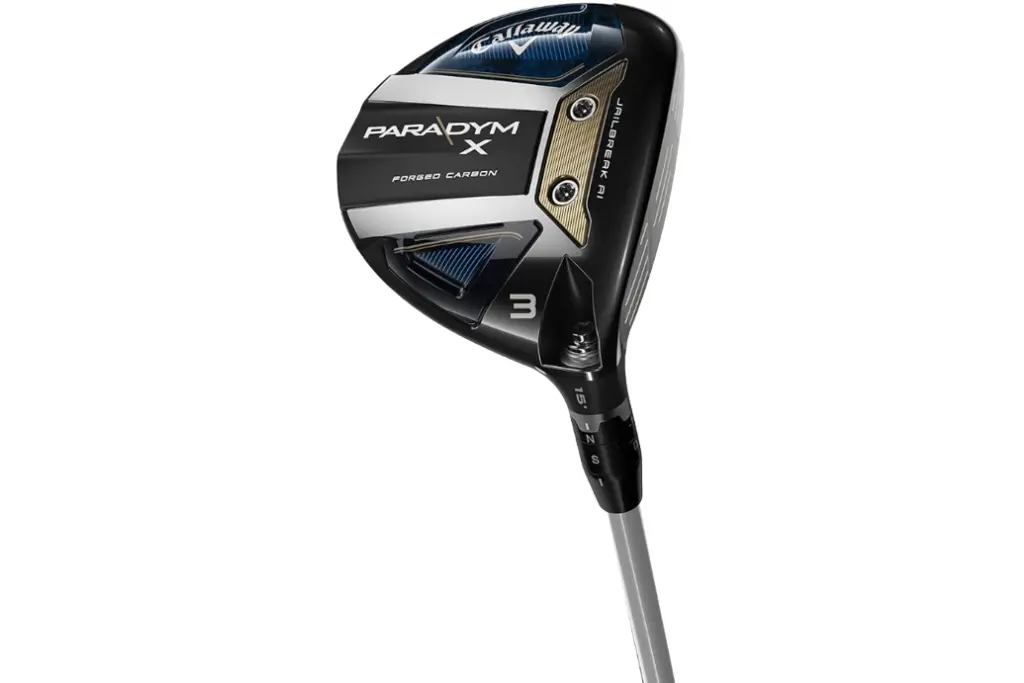
Fairway Woods are versatile clubs used by golfers of all skill levels. They help achieve long distances from the fairway, rough, or even the tee. These clubs usually have larger heads and longer shafts than irons, making them ideal for hitting the ball far and high.
Typical Distances
Understanding the typical distances for fairway woods can improve your game. Here’s a breakdown of the average distances:
| Club | Average Distance (Yards) |
|---|---|
| 3-Wood | 210-230 |
| 4-Wood | 200-220 |
| 5-Wood | 180-200 |
| 7-Wood | 170-190 |
The distances can vary based on skill level, swing speed, and conditions. Beginners may hit shorter distances, while professionals might achieve longer ranges.
Situational Use
Fairway Woods shines in specific situations. Here are some common uses:
- From the Fairway: Fairway woods are excellent for long approach shots.
- Off the Tee: They are a great alternative to drivers for controlled tee shots.
- In the Rough: These clubs can help get the ball out of moderate rough.
- Long Par 3s: Fairway woods can cover the distance needed on long par 3 holes.
Using the right club for the right situation can significantly lower your score.
Hybrids
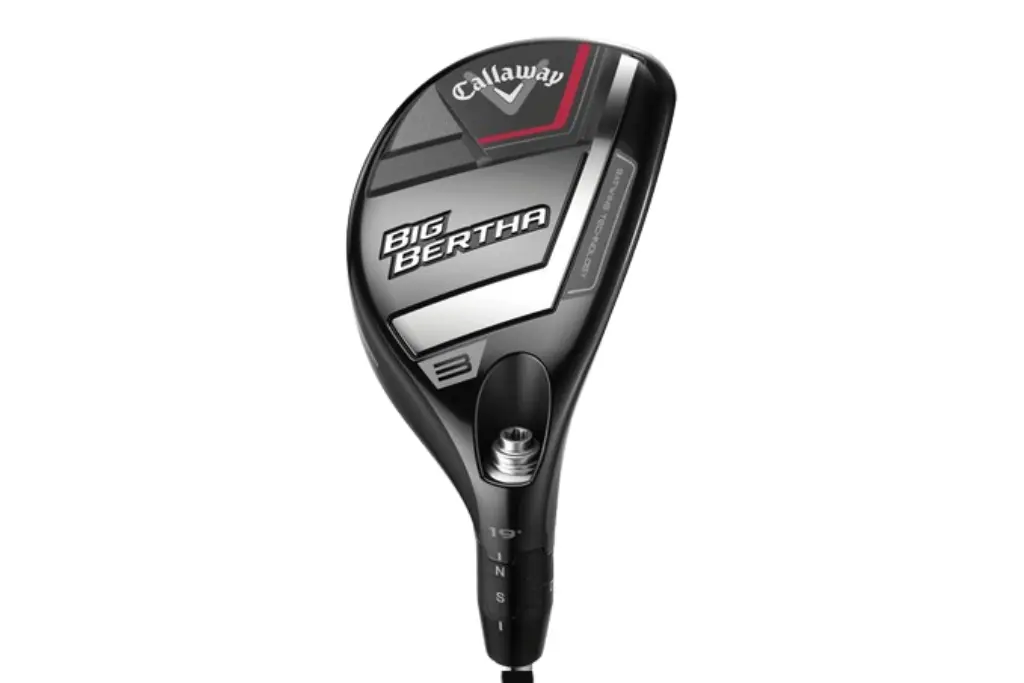
Hybrids are versatile clubs that combine the best features of irons and woods. They offer the distance of woods and the accuracy of irons. Golfers of all skill levels love hybrids for their ease of use and reliability.
Average Yardage
Understanding the average yardage for hybrids can improve your game. Below is a table showing the typical distances for various hybrid clubs:
| Club | Average Distance (Yards) |
|---|---|
| 2-Hybrid | 190-210 |
| 3-Hybrid | 180-200 |
| 4-Hybrid | 170-190 |
| 5-Hybrid | 160-180 |
Benefits Of Hybrids
Hybrids offer several benefits that can enhance your golf experience:
- Versatility: Hybrids work well on various lies and terrains.
- Forgiveness: These clubs are designed to reduce mishits.
- Distance: Hybrids can achieve greater distances than long irons.
- Accuracy: They provide better control and precision.
Using hybrids can help you lower your scores and enjoy the game more. Their unique design makes them suitable for both beginners and pros.
Long Irons
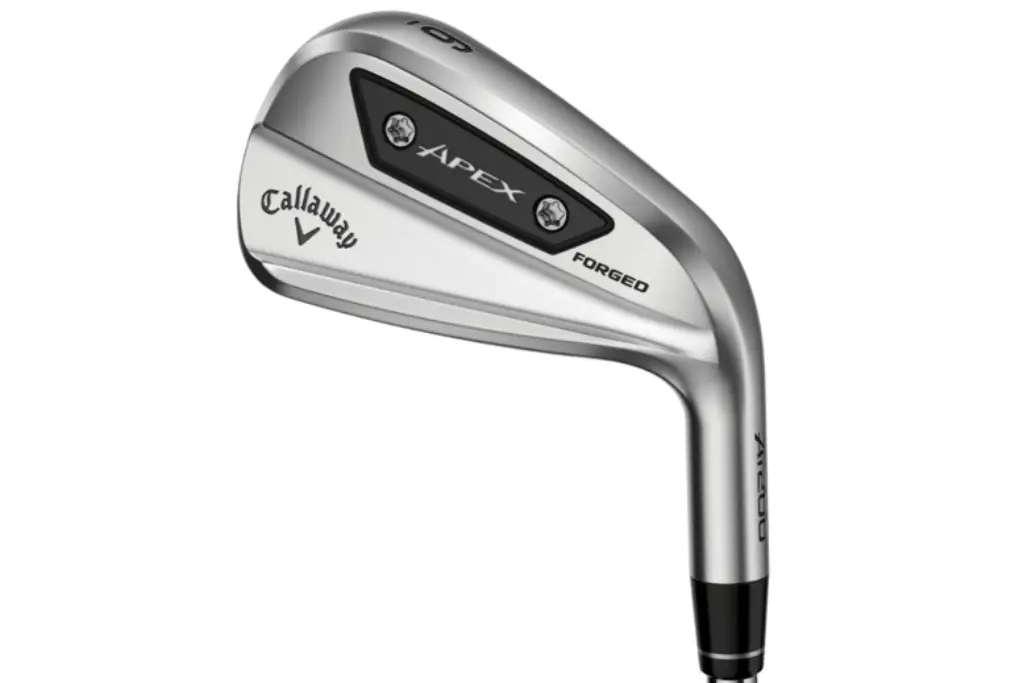
Long irons are critical clubs in a golfer’s bag. They include the 2-iron, 3-iron, and 4-iron. These clubs are known for their low loft and long shafts, making them ideal for long-distance shots. Let’s dive into the specifics of these clubs.
Distance Range
Understanding the distance range of long irons helps you choose the right club. Here’s a general idea of how far each long iron can go:
| Club | Average Distance (Yards) |
|---|---|
| 2-Iron | 190 – 210 |
| 3-Iron | 180 – 200 |
| 4-Iron | 170 – 190 |
These distances vary based on player skill and swing speed. It’s crucial to practice and understand your range.
When To Use Long Irons
Long irons are perfect for certain situations on the course. Here are some scenarios:
- When you need to hit from the fairway with precision.
- When you’re far from the green and need maximum distance.
- When you want a low-trajectory shot.
These clubs are less forgiving than hybrids or woods. Practice is key to mastering them. With long irons, you can achieve powerful and accurate shots.
Mid Irons
The mid-irons are essential for any golfer. They offer a balance between distance and control. These clubs typically include the 5, 6, and 7 irons. Understanding their yardage and use can improve your game.
Typical Yardage
The yardage for mid irons varies by player skill and strength. Below is a table showing average distances:
| Club | Average Distance (Yards) |
|---|---|
| 5 Iron | 160-180 |
| 6 Iron | 150-170 |
| 7 Iron | 140-160 |
Key Situations
Mid irons are versatile and used in various situations:
- Approach Shots: Use mid irons for accurate shots to the green.
- Par 3 Holes: Ideal for hitting the green on short par 3s.
- Fairway Lies: Perfect for hitting from fairways with good control.
Understanding these aspects helps in selecting the right club. Mid irons provide both distance and precision.
Short Irons
Short irons, typically including the 8-iron, 9-iron, and pitching wedge, are crucial for golfers. These clubs are essential for making accurate shots closer to the green.
Average Distances
Understanding the average distances each short iron can achieve is vital. This helps in selecting the right club for a given shot. Here is a breakdown of average distances for short irons:
| Club | Average Distance (Yards) |
|---|---|
| 8-Iron | 130-150 |
| 9-Iron | 120-140 |
| Pitching Wedge | 110-130 |
Precision Shots
Short irons are designed for precision shots. These clubs help you land the ball on the green with accuracy. Here are some tips for making precise shots:
- Grip the club firmly but comfortably.
- Keep your stance narrow for better control.
- Focus on a smooth, controlled swing.
- Keep your eyes on the ball throughout the swing.
Remember, practice makes perfect. Spend time on the range to master your short irons. Your game will improve with consistent practice and proper technique.
Wedges

Wedges are essential in a golfer’s bag. They are used for short-distance shots. These clubs help in getting the ball out of tricky spots. Understanding the average distance for each wedge can improve your game.
Distance Variability
The distance you can hit with a wedge varies. It depends on your skill level and swing speed. Generally, the average distances for wedges are:
- Pitching Wedge: 80-120 yards
- Gap Wedge: 70-110 yards
- Sand Wedge: 60-100 yards
- Lob Wedge: 50-90 yards
Your distances may differ. Practice helps you understand your range.
Types Of Wedges
There are four main types of wedges. Each has a specific use on the golf course.
| Wedge Type | Average Distance | Primary Use |
|---|---|---|
| Pitching Wedge | 80-120 yards | Longer approach shots |
| Gap Wedge | 70-110 yards | Fills the gap between pitching and sand wedges |
| Sand Wedge | 60-100 yards | Escaping bunkers |
| Lob Wedge | 50-90 yards | High, short-distance shots |
Pitching Wedge: Used for longer approach shots. It covers 80-120 yards.
Gap Wedge: Fills the distance gap. It covers 70-110 yards.
Sand Wedge: Ideal for bunkers. It covers 60-100 yards.
Lob Wedge: Perfect for high, short shots. It covers 50-90 yards.
Putting Distances
Understanding putting distances is key to improving your golf game. Different distances require different techniques. Knowing how far you need to go helps in making better decisions.
Short Putts
Short putts are within 10 feet of the hole. These are crucial for lowering your score. Focus on alignment and speed.
- Practice with a straight back-and-forth stroke.
- Avoid wrist movement for consistency.
- Pay attention to the green’s slope.
Using the right amount of power is essential. Too much force can overshoot, while too little can undershoot. Aim for a smooth, controlled stroke. Confidence is key.
Long Putts
Long putts are beyond 10 feet from the hole. These require more judgment and skill.
- Assess the green’s condition.
- Estimate the distance accurately.
- Plan your stroke for the distance.
Break down long putts into smaller targets. Aim to get close to the hole rather than sinking it. This minimizes the risk of a three-putt.
Practice makes perfect. Spend time on the practice green working on both short and long putts. This helps build confidence and skill.
| Distance | Technique | Focus Area |
|---|---|---|
| 0-5 feet | Straight stroke | Alignment |
| 5-10 feet | Controlled power | Speed |
| 10+ feet | Break down into targets | Distance estimation |
Improving your putting distances can greatly impact your game. Practice is essential for mastering both short and long putts.
Factors Influencing Distance
Understanding the factors influencing distance in golf is crucial for improving your game. Different elements affect how far the ball travels. Below, we discuss two primary factors: swing speed and ball type.
Swing Speed
Swing speed is a major factor in golf. It directly impacts the distance. A faster swing speed will usually result in a longer shot. Here’s a quick look:
| Club Type | Average Swing Speed (mph) | Average Distance (yards) |
|---|---|---|
| Driver | 90 | 230 |
| Iron | 80 | 150 |
| Wedge | 70 | 100 |
Improving your swing speed can help you hit the ball farther. Practice with a coach or use a swing analyzer. These tools help measure and improve your speed.
Ball Type
The type of ball you use also affects distance. Some balls are designed for maximum distance. Others focus on control and accuracy.
- Distance Balls: These balls are firmer. They travel farther but provide less control.
- Control Balls: These balls are softer. They offer better control but may not travel as far.
Choosing the right ball can make a difference. Here are some examples:
| Ball Type | Characteristics | Average Distance (yards) |
|---|---|---|
| Distance Ball | Firmer, less spin | 250 |
| Control Ball | Softer, more spin | 220 |
Experiment with different balls to find the best fit. Your choice can impact your overall game performance.
Weather Conditions

Weather conditions can significantly affect the average distance for each golf club. Understanding how weather impacts your game can help you make better decisions on the course.
Wind Impact
Wind can either help or hinder your shot. A strong tailwind can add distance to your shots, while a headwind can reduce it.
- Tailwind: Adds 10-20 yards
- Headwind: Reduces 10-20 yards
Crosswinds can also influence your shot’s direction, making it curve more than usual. Adjust your aim to compensate for these effects.
Temperature Effects
Temperature changes can alter the distance your ball travels. Warmer air means less air resistance, allowing the ball to travel farther. Colder air increases air resistance, shortening the distance.
| Temperature | Effect on Distance |
|---|---|
| Hot Weather (above 85°F) | Increases distance by 5-10 yards |
| Cold Weather (below 50°F) | Reduces distance by 5-10 yards |
Always consider temperature changes during your game. Adjust your club choice accordingly.
Course Conditions
Course conditions greatly impact the average distance for each golf club. Understanding fairway firmness and rough length helps golfers improve their game. Let’s explore these factors in detail.
Fairway Firmness
Fairway firmness affects how far the ball travels after landing. Firmer fairways provide more roll, increasing overall distance. Softer fairways absorb impact, reducing roll and distance.
| Fairway Condition | Effect on Ball | Distance Impact |
|---|---|---|
| Firm | More roll | Increases distance |
| Soft | Less roll | Decreases distance |
Rough Length
Rough length influences the ease of hitting the ball. Short roughs allow for better contact. Long roughs make it harder to hit clean shots, reducing distance.
- Short rough: Easier to hit, improves distance.
- Long rough: Harder to hit, reduces distance.
Knowing these conditions helps golfers choose the right club for each shot. It also helps in planning strategies to tackle different parts of the course.
Technology And Equipment
Modern golf clubs have evolved significantly. Today’s clubs are designed with advanced technology and materials to improve performance. Players can achieve greater distances and accuracy with the latest equipment.
Modern Club Design
Modern club design focuses on maximizing distance and control. Engineers use cutting-edge materials like titanium and carbon fiber. These materials are lightweight yet strong, enhancing the club’s performance.
Adjustable weights and loft settings allow golfers to customize their clubs. This personalization helps players achieve their desired ball flight and distance. The club’s center of gravity is strategically placed to optimize launch conditions.
Forged irons offer a soft feel and precision, while game improvement irons provide forgiveness on off-center hits. Drivers with larger clubfaces increase the sweet spot, reducing mishits and enhancing distance.
Distance Tracking Devices
Distance-tracking devices have revolutionized how golfers measure their performance. These devices provide accurate data on shot distances and patterns. They help golfers understand their strengths and weaknesses.
GPS watches and rangefinders are popular distance-tracking tools. They offer precise yardage to the pin, hazards, and other course features. Launch monitors provide detailed data on swing speed, ball speed, and launch angle.
Smartphone apps also offer distance-tracking capabilities. They allow golfers to track their stats and analyze their performance over time. Using these devices, golfers can make informed decisions about club selection and strategy.
Improving Your Distance
Increasing the average distance for each golf club can significantly enhance your game. Whether you’re a beginner or a seasoned golfer, focusing on improving your distance is essential. Below, we explore various training techniques and consistency tips to help you achieve this goal.
Training Techniques
Improving your distance requires dedicated practice and the right techniques. Here are some effective training methods:
- Strength Training: Focus on exercises that build core and upper body strength.
- Flexibility Drills: Incorporate stretching routines to increase your range of motion.
- Proper Posture: Maintain the correct stance to ensure maximum power in your swing.
Regular practice with these techniques will help you hit the ball further. Always warm up before starting your training session to avoid injuries.
Consistency Tips
Consistency in your swing is crucial for improving distance. Here are some tips to maintain a consistent swing:
- Grip: Ensure your grip is neither too tight nor too loose.
- Alignment: Always align your body correctly with the target.
- Follow-through: Complete your swing with a proper follow-through.
Practicing these tips regularly can lead to a more consistent and powerful swing. Consistency helps in achieving better control over your shots.
| Golf Club | Average Distance (Yards) |
|---|---|
| Driver | 230-300 |
| 3-Wood | 210-250 |
| 5-Iron | 160-200 |
| 7-Iron | 140-160 |
| Pitching Wedge | 100-130 |
Track your progress by noting the average distance for each club. Regularly update your records to see improvements over time.
Frequently Asked Questions
How Far Does Each Golf Club Go On Average?
Each golf club covers different distances. Drivers average 230-290 yards, 5-irons hit 160-210 yards, and wedges range 90-120 yards.
How Far Should a 72-Year-Old Man Hit A 7 Iron?
A 72-year-old man typically hits a 7 iron between 100-130 yards. Individual distances may vary based on fitness and skill level.
How Far Does The Average Golfer Hit A 7 Iron?
The average golfer hits a 7 iron between 140 to 160 yards. The distance can vary based on skill level and conditions.
How Far Does Tiger Woods Hit A 7 Iron?
Tiger Woods typically hits a 7-iron around 170 to 180 yards. His distance can vary based on conditions.
What Is The Average Distance For A Driver?
A driver typically hits the ball 230 yards on average.
How Far Can A 3-wood Hit?
A 3-wood averages around 210 yards.
What Is The Distance For A 5-wood?
A 5-wood usually covers 195 yards.
How Far Does A 3-iron Go?
How Far Does A 3-irA 3-iron generally hits 180 yards.on Go?
Conclusion
Understanding the average distance for each golf club can greatly improve your game. Use this knowledge to select the right club for each shot. Practice regularly to fine-tune your distances. Remember, consistency is key to becoming a better golfer. Happy golfing!






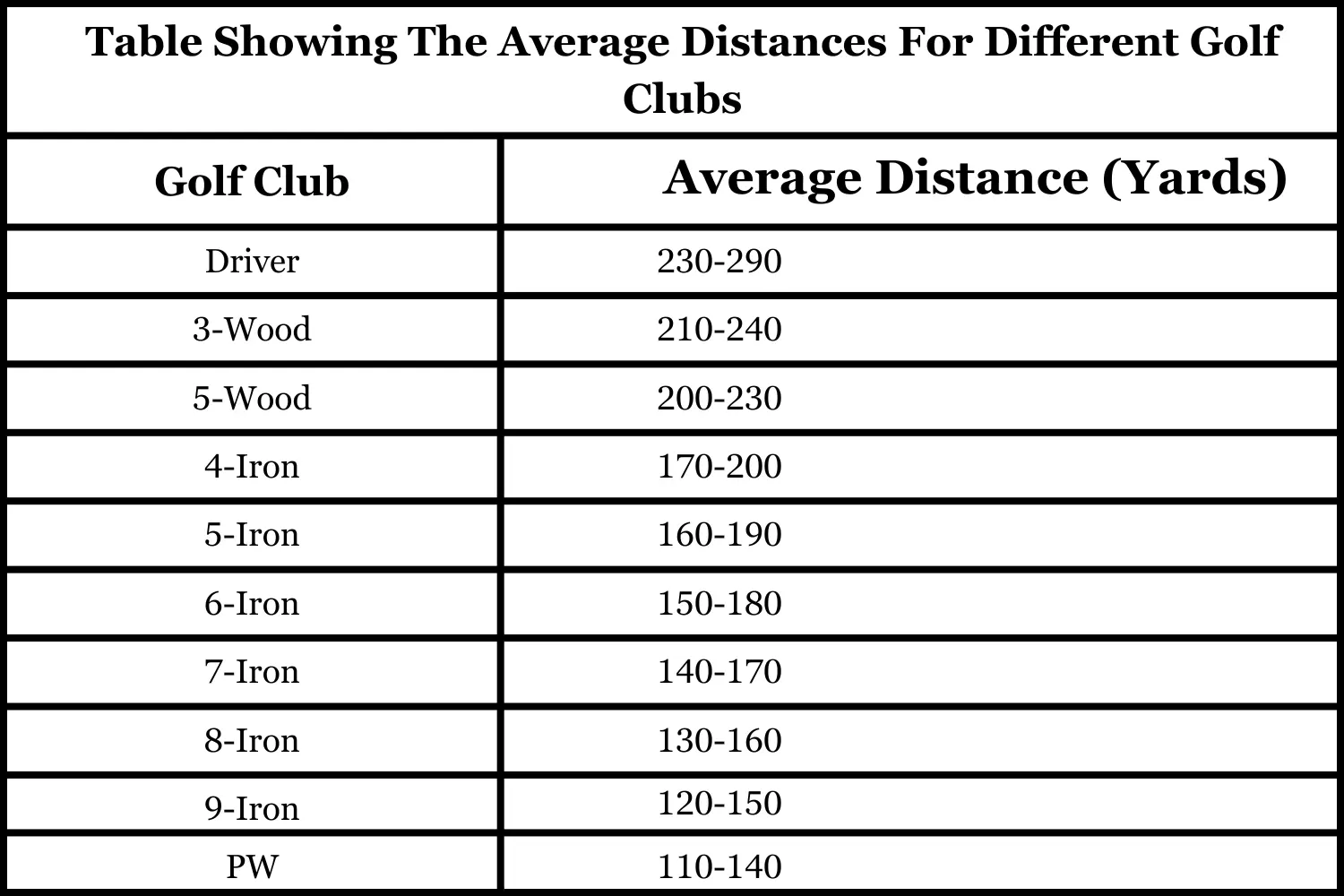


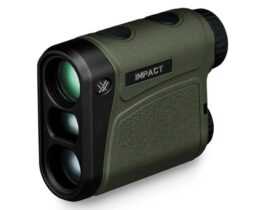



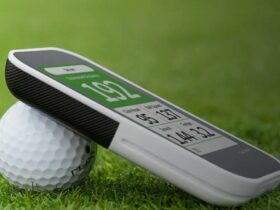



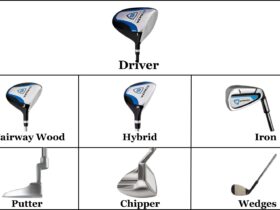
Leave a Reply